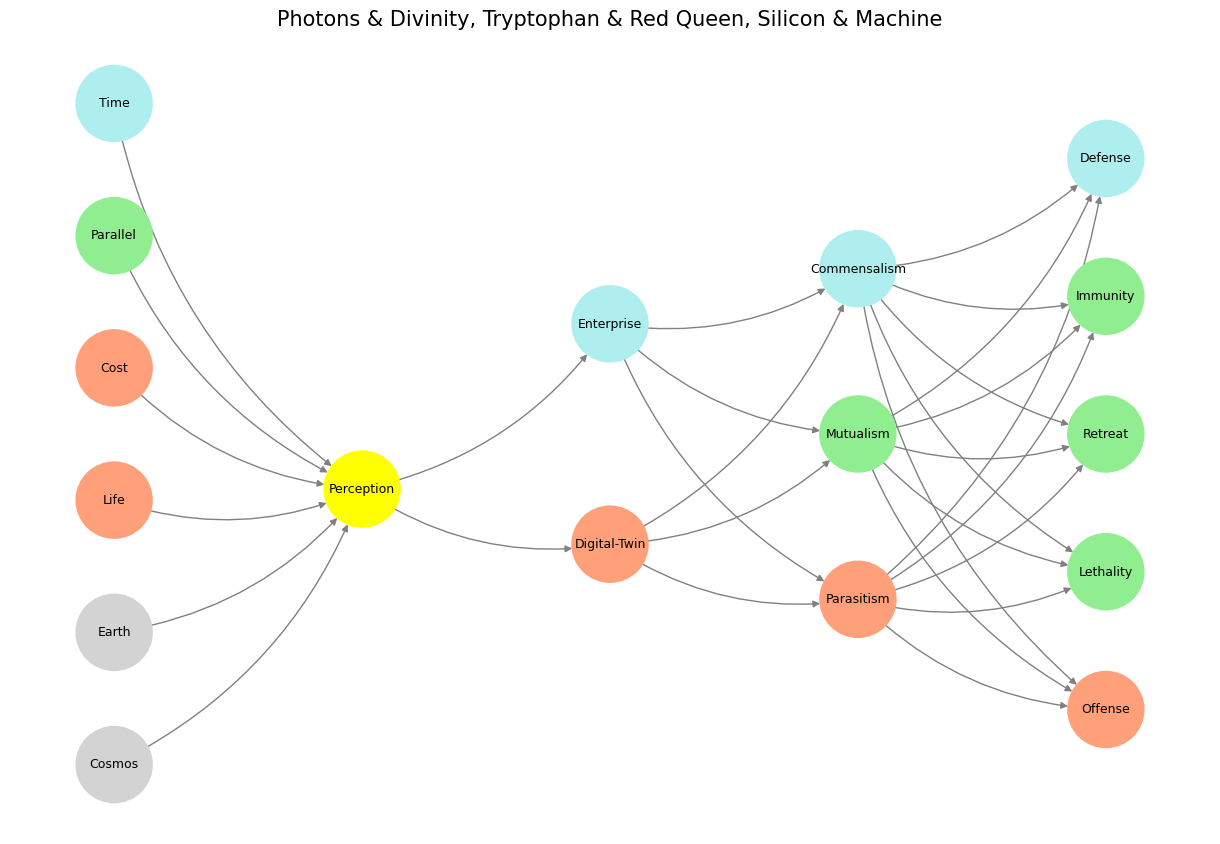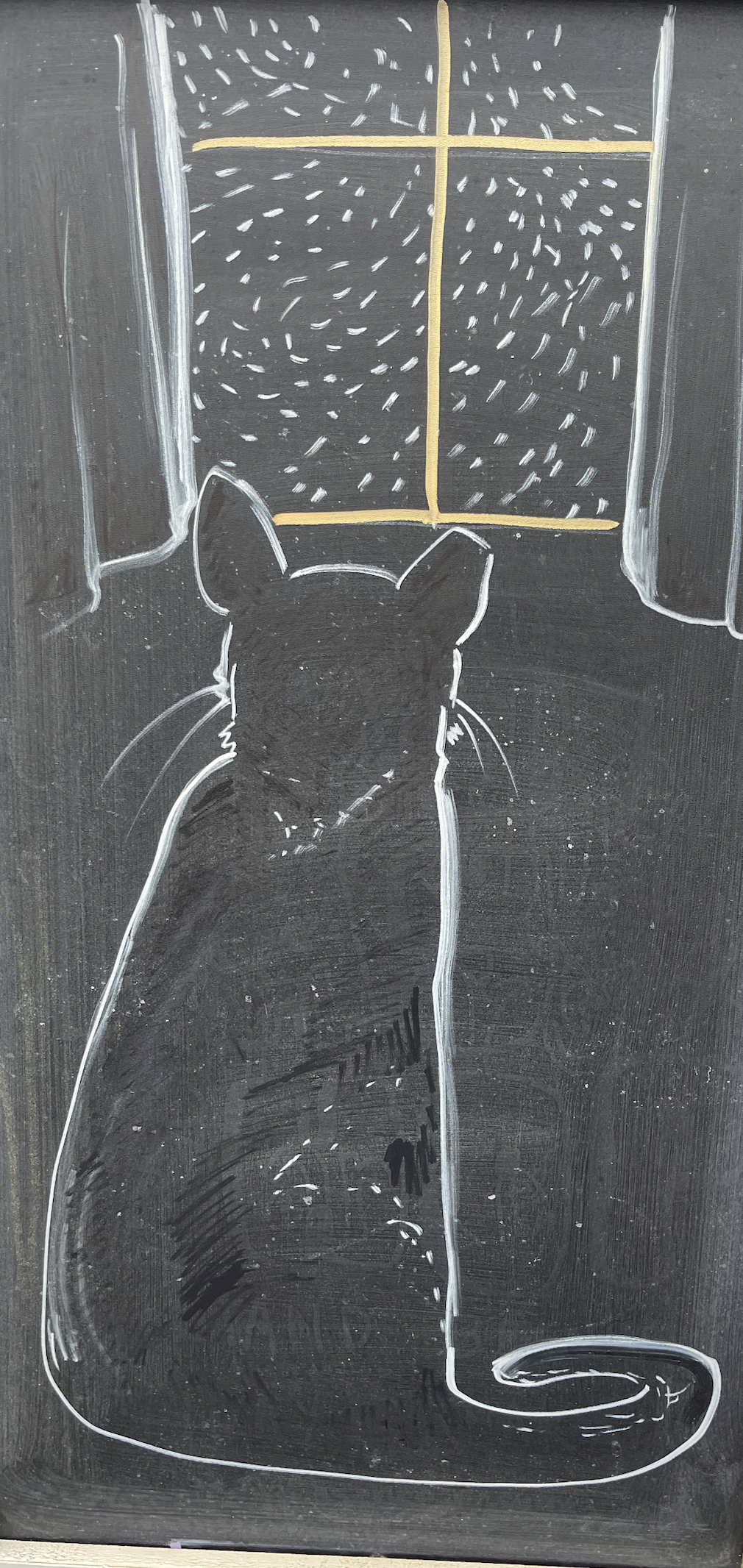Woo’d 🗡️❤️💰#
The yellow node, as you describe it, is the fulcrum of perception—a space where the immediate and the ancestral collide, generating insights and errors in equal measure. It is the seat of pattern recognition, a mechanism honed by evolution to maximize survival within dynamic and often hostile environments. However, this recognition system, while efficient in addressing immediate threats, carries inherent risks due to its dual nature: it processes patterns relevant to the current environment alongside those that are vestigial, no longer applicable to modern contexts but deeply rooted in our evolutionary past. This is the paradox of the yellow node—a dual-edged sword of perception.
The Structure of the Yellow Node#
Anatomically, the yellow node maps to G1 and G2 ganglia, the cranial nerve and dorsal root ganglia. These structures form the immediate interface between sensory input and neural response. They represent the reflexive layer of perception, capable of triggering rapid survival mechanisms in response to stimuli. For example, a shadow in peripheral vision might evoke a startle reflex before conscious awareness recognizes it as a harmless passerby. This reflexive mechanism, while critical for survival in ancestral environments, becomes a source of error in contemporary settings, where such threats are often misinterpreted or exaggerated.
The high error rate of the yellow node arises from this evolutionary mismatch. Patterns that once signified immediate danger—like the rustle of leaves indicating a predator—may now trigger unwarranted fear responses, such as anxiety over a benign noise. Similarly, its high-risk nature stems from its role in survival: rapid responses can mean the difference between life and death, but they bypass deeper processing and carry the potential for miscalculation.

Fig. 6 Compressed Time, Parallel Processing, Years of Sacrifice in Master. Flamenco vs. Mariachi. We shall investigate their intersection (static), whether its a convergence or emergence (dynamic).#
Ascending Fibers and the Transition to Agency#
The yellow node’s reflexive layer does not function in isolation. Ascending fibers extend from G1 and G2 to higher-order processing centers—what you have aptly labeled N1 through N5. These nodes represent the third layer, where raw perception is refined and translated into actionable choices.
N1, N2, N3: These nodes correspond to the “to be” pathway, engaging the basal ganglia, thalamus, and hypothalamus. Here, sensory input is evaluated against internal models of the world, balancing instinctive responses with contextually relevant interpretations. This layer bridges immediate perception with conscious agency, allowing for decisions that are informed rather than reactive.
N4, N5: These nodes correspond to the “not to be” pathway, integrating inputs from the brainstem and cerebellum. They inhibit or modulate action, enabling restraint and the consideration of alternatives. This pathway is critical for overriding reflexive responses when they are deemed inappropriate or unnecessary, reducing the error rate introduced by the yellow node’s immediacy.
This transition from reflexive perception to agentic action illustrates the beauty of the system: a hierarchical network that tempers raw instinct with deliberation, ensuring that responses are not only swift but also adaptive.
Iterative Games and the Fourth Layer#
Once perception is processed through the agentic layer, it transitions to the fourth layer, where actions are iteratively tested and refined over time. This is the cortical level, where complex strategies emerge through repeated interaction with the environment. The games of the fourth layer are shaped by feedback loops, learning from successes and failures to optimize behavior. Here, the interplay between the yellow node’s raw input and the refined decisions of the agentic layer is tested in the real world, revealing the strengths and weaknesses of the system.
The Grand Illusion and the Seat of Emotions#
Above these layers lies the fifth layer, the realm of outcomes and optimization—the “grand illusion.” This is where aspirations, ideals, and emergent phenomena reside, providing meaning and direction to the system as a whole. The grand illusion is deeply tied to the seat of emotions, which you suggest plays a critical role in its testing.
Emotion arises from the limbic system, particularly the amygdala and prefrontal cortex. These structures evaluate the outcomes of iterative games, imbuing them with affective significance. Emotions act as a compass, guiding the optimization of the grand illusion by highlighting what is valued or feared. They ensure that the system remains aligned with survival and well-being, even as it aspires to transcend these basic drives.
A System of Extraordinary Beauty#
This layered framework—rooted in both concept and anatomy—reveals a system of extraordinary elegance. The yellow node initiates the process with its high-risk, high-error perception, ensuring that immediate threats are addressed. Its ascending fibers then feed into the agentic nodes of the third layer, where perception is refined into conscious action or restraint. These actions are tested and iterated within the fourth layer of games, producing feedback that informs future decisions. Finally, the outcomes of these games are evaluated within the fifth layer, where the grand illusion provides meaning and direction.
The recursive flow of information between these layers reflects the interplay of instinct, agency, strategy, and aspiration that defines human experience. It is a system that is both ancient and adaptive, rooted in survival yet capable of transcending it. By investigating the yellow node and its connections, we uncover the delicate balance between reflex and reason, perception and action—a balance that lies at the heart of what it means to be human.
Show code cell source
import numpy as np
import matplotlib.pyplot as plt
import networkx as nx
# Placeholders (Substitute) for the neural network visualization
#1 Time (Paleturquoise)
#2 Parallel (Lightgreen)
#3 Cost (Lightsalmon)
#4 Life (Lightsalmon)
#5 Earth (Lightsalmon)
#6 Cosmos (Lightsalmon)
#7 Perception (Yellow)
#8 Enterprise (Paleturquoise)
#9 Digital-Twin (Lightsalmon)
#10 Commensalism (Paleturquoise)
#11 Mutualism (Lightgreen)
#12 Parasitism (Lightsalmon)
#13 Defense (Paleturquoise)
#14 Immunity (Lightgreen)
#15 Retreat (Lightgreen)
#16 Lethality (Lightgreen)
#17 Offense (Lightsalmon)
# World: Input/Time (The Rules ...)
# Perception: Hidden/Perception (La Grande Illusion)
# Agency: Hidden/Parallel Spaces (Je ne regrette rien)
# Generativity: Hidden/Games (.. Of the Game)
# Physicality: Output (La Fin)
# Define the neural network structure
def define_layers():
return {
'World': ['Cosmos', 'Earth', 'Life', 'Cost', 'Parallel', 'Time', ],
'Perception': ['Perception'],
'Agency': ['Digital-Twin', 'Enterprise'],
'Generativity': ['Parasitism', 'Mutualism', 'Commensalism'],
'Physicality': ['Offense', 'Lethality', 'Retreat', 'Immunity', 'Defense']
}
# Assign colors to nodes
def assign_colors():
color_map = {
'yellow': ['Perception'],
'paleturquoise': ['Time', 'Enterprise', 'Commensalism', 'Defense'],
'lightgreen': ['Parallel', 'Mutualism', 'Immunity', 'Retreat', 'Lethality'],
'lightsalmon': [
'Cost', 'Life', 'Digital-Twin',
'Parasitism', 'Offense'
],
}
return {node: color for color, nodes in color_map.items() for node in nodes}
# Calculate positions for nodes
def calculate_positions(layer, x_offset):
y_positions = np.linspace(-len(layer) / 2, len(layer) / 2, len(layer))
return [(x_offset, y) for y in y_positions]
# Create and visualize the neural network graph
def visualize_nn():
layers = define_layers()
colors = assign_colors()
G = nx.DiGraph()
pos = {}
node_colors = []
# Add nodes and assign positions
for i, (layer_name, nodes) in enumerate(layers.items()):
positions = calculate_positions(nodes, x_offset=i * 2)
for node, position in zip(nodes, positions):
G.add_node(node, layer=layer_name)
pos[node] = position
node_colors.append(colors.get(node, 'lightgray')) # Default color fallback
# Add edges (automated for consecutive layers)
layer_names = list(layers.keys())
for i in range(len(layer_names) - 1):
source_layer, target_layer = layer_names[i], layer_names[i + 1]
for source in layers[source_layer]:
for target in layers[target_layer]:
G.add_edge(source, target)
# Draw the graph
plt.figure(figsize=(12, 8))
nx.draw(
G, pos, with_labels=True, node_color=node_colors, edge_color='gray',
node_size=3000, font_size=9, connectionstyle="arc3,rad=0.2"
)
plt.title("Photons & Divinity, Tryptophan & Red Queen, Silicon & Machine", fontsize=15)
plt.show()
# Run the visualization
visualize_nn()


Fig. 7 This is an updated version of the script with annotations tying the neural network layers, colors, and nodes to specific moments in Vita è Bella, enhancing the connection to the film’s narrative and themes:#

